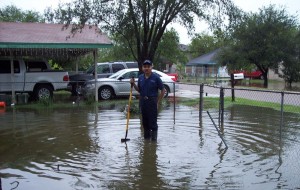LatinaLista — When it comes to the national recovery of this nation’s worst economic times since the Great Depression, it has been no secret that blacks and Latinos have fared worse in the recovery period than whites and Asians. It would seem then that there’s nothing for communities of color to be thankful for.

In fact, in today’s released report, The State of Communities of Color in the U.S. Economy: Still Feeling the Pain Three Years Into the Recovery, by the Center for American Progress, the findings reveal just how dour things are for these communities.
But from a different angle, these dismal findings do have a silver lining. We have documentation of just how deep disparities do exist among the different ethnic and racial groups. As the old saying goes — with knowledge comes power — and knowing the state of the lack of progress in the recovery for blacks and Latinos, in particular, can spur immediate address for the reasons why.
Yet, before anything can be fixed, people have to know about it:
- African Americans and Latinos persistently suffer from high unemployment rates. The unemployment rate of African Americans is typically twice as high as that of white Americans, while the Latino unemployment rate is about 50 percent greater than the rate for whites.
- Slower job growth during the recovery leaves communities of color in a deep economic hole. Employment in the fourth quarter of 2011 was 88.9 percent of African American employment in December 2007 and 91.4 percent of Latino employment, compared to 93.6 percent for whites and 92.9 percent for Asian Americans.
- African Americans enjoy fewer job opportunities than other groups. The employed share of the population was 52.1 percent for African Americans and 59.3 percent for Latinos, compared to 59.4 percent for whites and 59.9 percent for Asian Americans in the fourth quarter of 2011.
- African Americans and Latinos earn less than others. African Americans’ median weekly earnings were $674 (in constant 2011 dollars), and Latinos’ earnings were $549. In comparison, whites earned $744 each week, and Asian Americans earned $866 in the fourth quarter of 2011.
- African Americans and Latinos swell the ranks of minimum wage earners. From 2009 to 2011—two years into the recovery—the number of African American minimum wage workers increased by 16.6 percent, and that of Latino minimum wage workers increased by 15.8 percent, while Asian Americans in minimum wage positions decreased by 15.4 percent, and whites only increased by 5.2 percent.
- Household incomes have fallen drastically for African Americans since the recession. Inflation-adjusted median incomes for African Americans fell by 7.1 percent from 2007 to 2009, faster than for any other population group. Further, inflation-adjusted median household incomes dropped another 3.2 percent from 2009 to 2010, which was as fast or faster than comparable income drops for any other population group.
- Poverty rates, already much higher for communities of color, rose faster in recession and recovery than for whites. African Americans and Latinos showed poverty rates of 24.2 percent and 24 percent, respectively, in 2010, compared to poverty rates of 9.3 percent for Asian Americans and 7.3 percent for whites. Poverty rates rose faster from 2007 to 2009 for African Americans—by 2.4 percentage points — for Latinos by 3.5 percentage points, and for Asian Americans by 2.2 percentage points, compared to whites, whose poverty rate increased by 1.6 percentage points during the same time period.
- Communities of color have substantially less health insurance coverage than whites. The share of African Americans without health insurance in 2010 was 20.8 percent, and the respective share of Latinos without insurance coverage was 30.7 percent. This compares to 18.1 percent of Asian Americans without health insurance and 11.7 percent of whites without health insurance at the same time.
- The wealth gap between communities of color and whites widened sharply due to housing market weaknesses. The median nonwhite or Latino household had $23,300 in wealth in 2009 dollars, less than one-sixth of the wealth of white non-Latino households, which had $149,900 in wealth. This reflects a substantial widening of an already very large wealth gap between communities of color and whites at the start of the recession in 2007, when nonwhites or Latino households owned about one-fifth of the typical wealth of white non-Latino households.
- Retirement plan coverage is lower for communities of color than it is for whites and continues to decline for African Americans. In 2010—one year into the recovery—the percentage of African American private-sector workers who had a retirement plan at work was 34.4—for Latinos that number was 21.4 percent, while it was 44.3 percent for whites
The economic picture is not good for African Americans and Latinos but it’s within the power of Congress and state legislators to correct the course for these communities by providing them the kinds of programs and services that aren’t just needed but necessary to steer a path towards prosperity for these groups who before long will be the majority in this country and will need to have in place all the tools in life that makes a person successful and part of the engine that keeps a country running strong.





Comment(1)
Today’s Links | Nubian Stylez
[…] New report details how Latinos and African Americans still feeling … African Americans and Latinos persistently suffer from high unemployment rates. The unemployment rate of African Americans is typically twice as high as that of white Americans, while the Latino unemployment rate is about … […]